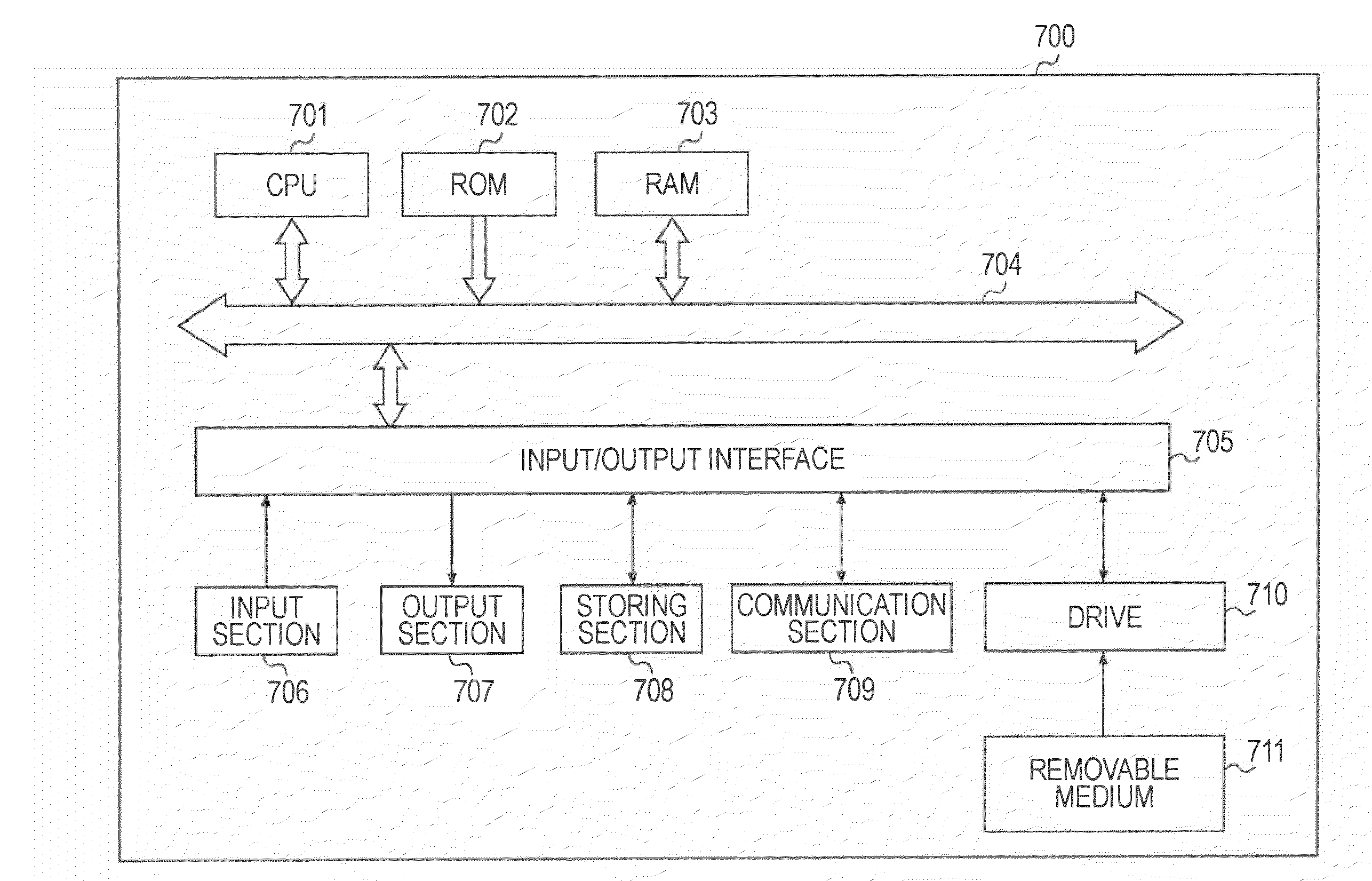Image processing device and method, learning device and method, program, and recording medium
a learning device and image processing technology, applied in the field of image processing devices and methods, learning devices and methods, programs, and recording media, can solve the problems of difficult to determine which portion of an image corresponds to block noise, noise reduction effect may not be expected, and difficulty in identifying block boundaries on the basis of that information, so as to reduce perceived noise and high perceived resolution
- Summary
- Abstract
- Description
- Claims
- Application Information
AI Technical Summary
Benefits of technology
Problems solved by technology
Method used
Image
Examples
Embodiment Construction
[0056]Before describing an embodiment of the present invention, the correspondence between the features of the present invention and embodiments disclosed in the specification or drawings is discussed below. This description is intended to assure that an embodiment(s) supporting the present invention are described in the specification or drawings. Thus, even if an embodiment in the following description is not described as relating to a certain feature of the present invention, that does not necessarily mean that the embodiment does not relate to that feature of the present invention. Conversely, even if an embodiment is described herein as relating to a certain feature of the present invention, that does not necessarily mean that the embodiment does not relate to other features of the present invention.
[0057]According to an embodiment of the present invention, there is provided an image processing device which processes an input image to generate a processed image, including: smoot...
PUM
 Login to View More
Login to View More Abstract
Description
Claims
Application Information
 Login to View More
Login to View More - R&D
- Intellectual Property
- Life Sciences
- Materials
- Tech Scout
- Unparalleled Data Quality
- Higher Quality Content
- 60% Fewer Hallucinations
Browse by: Latest US Patents, China's latest patents, Technical Efficacy Thesaurus, Application Domain, Technology Topic, Popular Technical Reports.
© 2025 PatSnap. All rights reserved.Legal|Privacy policy|Modern Slavery Act Transparency Statement|Sitemap|About US| Contact US: help@patsnap.com



